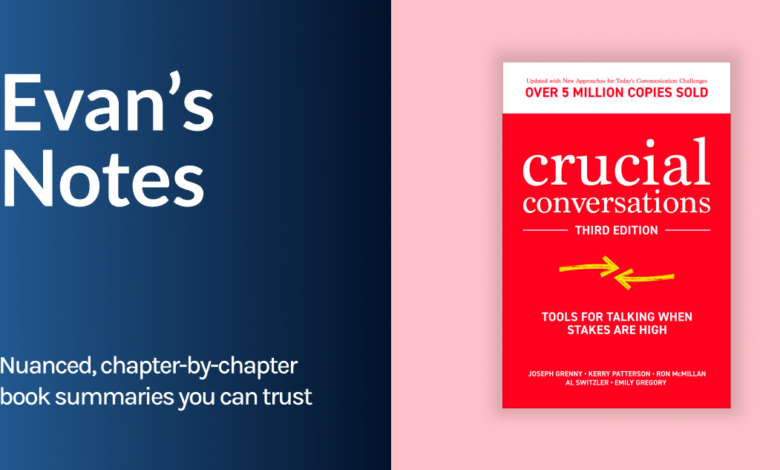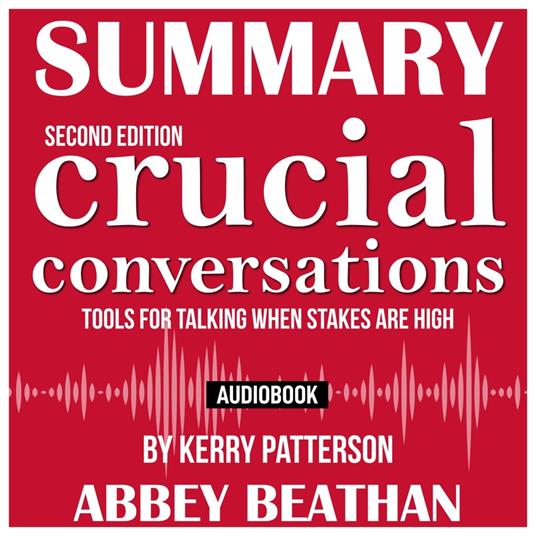Navigating Tough Talks: Key Insights from Our Crucial Conversations PDF

Introduction to Crucial Conversations pdf
crucial conversations pdf Have you ever found yourself dreading a conversation, knowing it could be challenging? Tough talks are often unavoidable when addressing a sensitive issue at work or discussing feelings with a loved one. The good news is that you don’t have to navigate these conversations alone. The “Crucial Conversations PDF” offers valuable insights and strategies to empower individuals to handle high-stakes discussions effectively crucial conversations pdf.
This guide dives deep into the art of communication during critical moments. With actionable tips and relatable examples, it helps transform anxiety into confidence. Ready to learn how to turn potentially explosive dialogues into constructive exchanges? Let’s explore what makes this resource essential for anyone looking to improve their communication skills!
What Makes a Crucial Conversations pdf

crucial conversations pdf is a powerful resource for anyone looking to improve their communication skills. It distills complex theories into accessible formats, making it easy to grasp essential concepts crucial conversations pdf.
What truly sets this document apart is its focus on high-stakes dialogues. These are the moments that can define relationships and careers. The PDF offers practical strategies tailored for navigating these tricky discussions crucial conversations pdf.
Another critical aspect is the emphasis on emotional intelligence. Understanding your feelings and those of others creates a foundation for effective dialogue. This awareness allows participants to engage more meaningfully.
The structure often includes real-life scenarios, illustrating how theory translates into practice. Learning through examples enhances comprehension and retention, making applying lessons in daily life easier.
The Four Key Components of a Crucial Conversations pdf
Understanding the four critical components of a crucial conversation PDF can enhance your communication skills significantly crucial conversations pdf.
First, there’s the element of safety. It is vital to create an atmosphere where all parties feel secure enough to express their thoughts without fear of backlash. When people feel safe, they are more likely to engage honestly.
Next is clarity. Effective communication hinges on articulating your message clearly and concisely. Avoid jargon or overly complex explanations; simplicity breeds understanding.
The third component is mutual respect. Recognizing each individual’s perspective fosters cooperation and open dialogue. Respect leads to better outcomes in discussions that could otherwise become contentious.
Focus on shared goals or purposes during conversations. Establishing common ground helps guide discussions toward constructive resolutions rather than divisive arguments. Each component is pivotal in navigating tough talks with confidence and effectiveness.
Strategies for Navigating Tough Talks
Navigating tough talks requires a thoughtful approach. The first step is to create a safe environment where all parties feel respected and heard. This sets the tone for open dialogue.
Next, focus on speaking persuasively. Use precise language and avoid jargon that may confuse others. Tailor your message to resonate with your audience’s values and concerns.
Listening plays a critical role in these conversations. Engage actively by nodding or paraphrasing what the other person says. This demonstrates genuine interest in their perspective.
Strive to find mutual purpose during discussions. Shift from an aggressive mindset to one of collaboration. Identify shared goals that can bridge differences and foster understanding among participants.
These strategies empower individuals to confidently tackle complex subjects, building stronger relationships in both personal and professional environments.
- Creating a Safe Environment
Creating a safe environment is essential for effective communication during crucial conversations. When individuals feel secure, they are more likely to speak candidly and share their thoughts.
Start by establishing trust. Be open about your intentions. This transparency encourages others to reciprocate, laying the groundwork for honest dialogue.
Nonverbal cues matter, too. Maintaining eye contact shows that you value what others say, and a calm tone can diffuse tension and promote understanding.
It’s also vital to respect differing perspectives. Acknowledge emotions without judgment, allowing everyone involved to express themselves freely.
Set clear boundaries around the conversation topic. Defining what will be discussed helps prevent misunderstandings and keeps the focus on resolving issues effectively. By prioritizing safety in your discussions, you foster an atmosphere where constructive dialogue can thrive.
- Speaking Persuasively, crucial conversations pdf
Speaking persuasively is a vital skill during crucial conversations. It’s about conveying your message clearly and effectively.
When you speak, focus on the facts and use concrete examples to support your points. This approach enhances credibility and makes it easier for others to understand your perspective.
Emotional intelligence also plays a role here. Connecting with your audience requires empathy. Acknowledge their feelings while sharing yours, creating a balanced dialogue.
Moreover, use “I” statements instead of “you” accusations. Phrases like “I feel” or “I need” help prevent defensiveness in others.
Practice active listening as you communicate. Pay attention not just to words but also to non-verbal cues. This builds rapport and ensures both sides feel heard during the discussion, making persuasion more effective in tough talks.
- Listening to the crucial conversations pdf
Listening is a cornerstone of effective communication. The “Crucial Conversations PDF” highlights this essential skill, emphasizing the need to be fully present during discussions.
Active listening involves more than just hearing words. It’s about understanding the emotions and intentions behind those words. Engaging with your conversation partner fosters trust and openness.
Focus on nonverbal cues to improve your listening skills. Nod in agreement or maintain eye contact to show you care. Reflect on what you’ve heard to confirm your understanding.
It’s also vital to resist the urge to formulate responses while the other person speaks. This allows a more profound comprehension of their perspective instead of jumping ahead with your thoughts.
Using techniques from the “Crucial Conversations PDF,” you can transform tough talks into productive dialogues, paving the way for better personal and professional relationships.
- Finding Mutual Purpose
Finding mutual purpose is essential in crucial conversations. It transforms a potentially adversarial dialogue into a collaborative one. It fosters openness when both parties understand they are on the same team.
Start by identifying shared goals or values. This creates common ground and paves the way for honest communication. Encourage each participant to express their perspectives while actively listening.
Ask open-ended questions that invite discussion rather than defensiveness. For instance, “What outcomes are important to you?” can reveal underlying motivations.
Recognizing each other’s needs boosts trust and reduces tension. When people feel heard and understood, they’re more willing to compromise.
Seeking mutual purpose shifts focus from winning an argument to resolving issues together. This mindset lays the foundation for constructive outcomes in any challenging conversation.
Real-Life Examples and Case Studies
Real-life examples illuminate the principles of crucial conversations. Take a team leader facing resistance to new policies. Instead of imposing changes, they initiated an open dialogue. By addressing concerns and inviting feedback, trust was established.
Another case involves a couple navigating financial stress. They realized that avoiding discussions only deepened resentment. Both partners felt heard and understood through honest exchanges about their spending habits.
In corporate settings, organizations often use these techniques during performance reviews. Managers prioritize creating safe spaces for employees to voice their thoughts on career development without fear of backlash.
These scenarios highlight how applying crucial conversation strategies can lead to resolution and stronger relationships in various contexts. Each example serves as a reminder that tough talks can pave the way for mutual understanding and growth when approached correctly.
Applying Crucial Conversations in Personal and Professional
Crucial conversations can be transformative, both personally and professionally. Applying the insights from crucial conversations in PDF format to your daily life opens up new pathways for communication.
In personal relationships, tackling tough subjects becomes more manageable. Whether addressing a lingering issue with a friend or discussing shared responsibilities at home, using strategies from the crucial conversation framework fosters understanding and connection. Creating a safe environment where openly expressing feelings paves the way for constructive dialogue that strengthens bonds.
These skills are equally vital in professional settings. They help navigate workplace dynamics more effectively. From resolving conflicts with colleagues to negotiating project terms, mastering persuasive speaking and attentive listening can lead to successful outcomes. The emphasis on finding mutual purpose transforms challenging discussions into opportunities for collaboration.
Real-life applications of these principles yield remarkable results. Couples report improved communication after implementing techniques learned from the crucial conversations PDF. Teams often find themselves more cohesive when adopting methods prioritizing safety and respect during difficult talks.
Engaging in meaningful discussions is essential in today’s fast-paced world at home and work. Embracing these strategies enhances relationships and builds a culture of openness wherever you go. With practice and commitment to applying what you’ve learned about crucial conversations, navigating tough talks becomes an empowering experience rather than an intimidating one.





